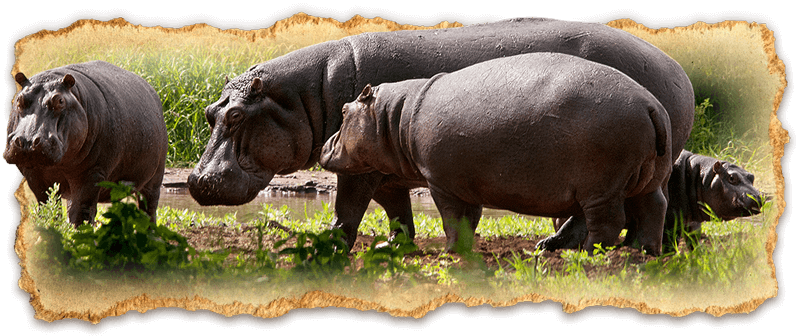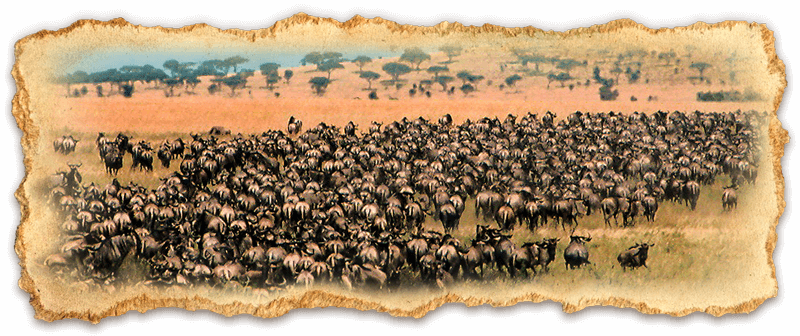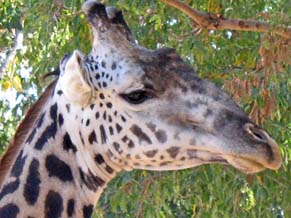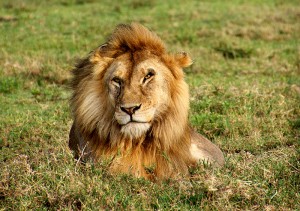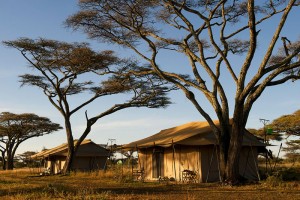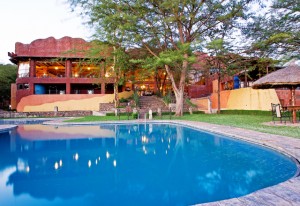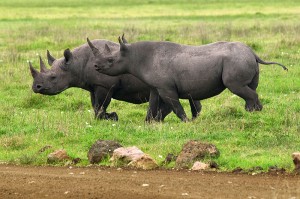Mara River Wildebeest Migration Escape
~ Deluxe ~
~ Deluxe ~
The best season for this departure is July, September and early October
Safari Overview
Our Deluxe Mara River Wildebeest Migration Safari lets you witness immense herds of wildebeest migration in the northern tip of Serengeti and along Mara River. Should the timing be just right, you’ll see wildebeest crossing the Mara River. Amidst the journey, enjoy deluxe accommodations while visiting Tanzania’s most popular national parks and destinations.
11 days
10 nights
- Safari Highlights:
- Behold the highest concentration of elephant in Northern Tanzania at Tarangire National Park.
- Discover the Great Wildebeest Migration in Northern Serengeti.
- Explore nature on foot adjacent Lake Manyara.
- Capture the abundance and diversity of wildlife including the rare black rhino in the Ngorongoro Crater.
- Discover historical local culture and great hospitality with a stop at Maasai Village.
- Enjoy 4-overnights and 3.5-days of game drive in the vast Serengeti Plains.
- Witness the “Cradle of Mankind,” Olduvai Gorge.
Itinerary
Deluxe Mara River Wildebeest Migration Safari: Discover Northern Tanzania
Day 1
Arrive in Arusha, Tanzania
You will arrive Kilimanjaro International Airport (JRO) by your international flight. Your driver guide will meet you at you at the airport and drive you to Kibo Palace Hotel (or similar) for dinner and overnight (Bed & Breakfast).
About Kibo Palace Hotel
Day 2
Tarangire National Park
Drive to Maramboi Tented Camp for lunch, then enjoy an afternoon game drive in Tarangire National Park. Dinner and overnight will be at Maramboi Tented Camp (or similar).
About Tarangire National Park
About Maramboi Tented Camp
Day 3
Game Drive and Nature Walk
Take an early morning game drive in Tarangire National Park, followed by a late lunch at your camp. In the afternoon, delight in a nature walk adjacent to Lake Manyara. Dinner and overnight will be at Maramboi Tented Camp (or similar).
About Nature Walk
Day 4
Lake Manyara National Park
After breakfast, drive to Lake Manyara National Park for a morning game drive with picnic lunch. Late afternoon, return to your Lodge. Dinner and overnight will be at Tloma Mountain Lodge (or similar).
About Lake Manyara National Park
About Tloma Mountain Lodge
Day 5
Serengeti National Park
After breakfast, drive to Serengeti National Park with a picnic lunch. Following entry to the Serengeti checkpoint, get ready for an afternoon game drive, en route to your lodge. Dinner and overnight will be at Serengeti Simba Lodge (or similar).
About Serengeti National Park
About Serengeti Simba Lodge
Day 6
Journey to the North
After breakfast, depart to Northern Serengeti doing a game drive on the way to your camp. Following camp check-in, enjoy your lunch. In the afternoon, continue on with a game drive in the Northern Serengeti. Dinner and overnight will be at Mara Under Canvas Tented Camp (or similar).
About Mara Under Canvas Tented Camp
Day 7
Mara River Sightings
After Breakfast, you’ll travel to Mara River to search for wildebeest migration (seeing migration is subject to rain pattern at the time of visit). Dinner and overnight will be at Mara Under Canvas Tented Camp (or similar).
About Mara River
Day 8
The Central Serengeti
After breakfast, do a game drive en route to Central Serengeti. Enjoy a picnic lunch and then continue with an afternoon game drive. Dinner and overnight will be at Serengeti Sopa Lodge (or similar).
About Serengeti Sopa Lodge
Day 9
Olduvai Gorge Museum & Maasai Village
After breakfast, travel to Olduvai Gorge, “the Cradle of Mankind,” doing a game drive en route. At noon, enjoy a picnic lunch. Following lunch, visit Maasai Village before continuing to your lodge. Dinner and overnight will be at Ngorongoro Farm House (or similar).
About Olduvai Gorge Museum
About Maasai Village
About Ngorongoro Farm House Valley
Day 10
Game Drives in the Crater
After an early breakfast, leave the camp at 7:00 AM, driving straight to Ngorongoro Crater for a full-day game drive. In the afternoon, enjoy a picnic lunch and continue with more game run. Dinner and overnight will be at Ngorongoro Farm House (or similar).
About Ngorongoro Crater
Day 11
Return to Arusha
After breakfast, you will be driven back to Arusha for lunch and a dayroom at Kibo Palace Hotel. In the evening, you’ll be transferred to Kilimanjaro International Airport (JRO) for your international flight back home.
- Inclusions:
- Respective accommodations or similar throughout as indicated.
- All meals on main tour as shown (except Day 1 at Bed & Breakfast).
- All game drives with photographic roof hatch land cruiser operated by a professional driver guide.
- All transfers as per the itinerary.
- Complimentary bottled water during game drives.
- Tips to waiters.
- All national park entry fees and Olduvai Gorge Museum entry fee.
- Visit to Maasai Village.
- Exclusions:
- Entry VISA and local airport tax.
- Personal and baggage insurance.
- Excess baggage charges levied by airline.
- Meals and beverages other than specified.
- Tips to your driver guide.
- Tips to porters.
- Cost for anything not mentioned on the list above.
Accommodations
Our Deluxe Mara RiverWildebeest Migration SafariFeatures Deluxe Accommodations
Kibo Palace Hotel - Arusha
Named after the highest peak of Africa’s highest mountain – Mt Kilimanjaro, Kibo Palace Hotel is one of Arusha’s most exciting and innovative luxury hotels; contemporary, conductive and unconventional, a luxury hotel with a new attitude. Located in the heart of Arusha, gateway to the world’s most renowned game parks, it is a 45-minute drive from Kilimanjaro International Airport (JRO) and a 15-minute walk from Arusha city center and the Arusha International Conference Center. [learn more]
Maramboi Tented Camp - Tarangire National Park
An impressive landscape from the Rift Valley gives the visitor an amazing natural welcome to an area extraordinarily rich in wildlife. Maramboi Tented Camp offers stunning views of the Manyara National Park, Rift Valley, Ngorongoro highlands and on clear days even Oldonyo Lengai a sacred mountain to the Maasai. The camp offers 40 spacious tents built on ample wooden decks. Among them there are 26 standard rooms, 10 suites and 2 units with 2 rooms interconnected; ideal for families with children. They all have en suite facilities and private verandas with 24 hours 220V electric lighting. [learn more]
Tloma Lodge - Karatu (and Near Ngorongoro Area)
Tloma Lodge is an exclusive petite 36-cottage lodge situated within the Ngorongoro Highlands Area. Featuring 36 spacious rooms of various bedding (28 twins, 4 kings, 4 triples, 4 interconnected rooms). All rooms have views to Ngorongoro Highlands, large beds, a private veranda, scenic walkways, telephones, en-suite bathrooms with built in showers, and mosquito nets. [learn more]
Serengeti Simba Lodge - Serengeti National Park
Serengeti Simba Lodge, named after the lion (Simba in Swahili)—king of the jungle, a symbol of strength, pride and royalty—sits high on a hill with endless vistas of the great Serengeti Plains. We welcome you to explore, experience and enjoy the African wilderness and the amazing Serengeti as our guest at Serengeti Simba Lodge. The ‘Serengeti Migration’ passes the lodge twice a year, around June-July and again in October when millions of ungulates make their annual trek through the Serengeti eco-system. [learn more]
Mara Under Canvas Tented Camp - Northern Serengeti
Deep within the northern Serengeti's prime wildlife area, Mara Under Canvas offers perfect luxury from which to witness the Great Migration and to explore the more remote corners of Tanzania’s oldest and most famous National Park. Peaking between June and November, guests can observe an annual wildlife spectacle quite unlike any other, as over a million wildebeest, zebra and other ungulates move into the northern Serengeti in search of fresh grazing and water. This lavish camp has 10 spacious safari tents each with a double bed and en suite bathroom. A team of friendly and attentive staff ensures that guests enjoy absolute comfort while experiencing the sights, sounds and smells of the African bush. [learn more]
Serengeti Sopa Lodge - Serengeti National Park
Located on the edge of the escarpment overlooking the plains of the south-western Serengeti National Park, home to many thousands of wild and rare animals. There are 4 very spacious double storey suites (with lounge area, dining, and balcony facing the Serengeti Plains) and 69 standard rooms, all with 2 queen size beds, carpeted, and tastefully furnished with local fabrics and pictures. Amenities include a lounge area with a mini bar and verandah facing the vast Serengeti plains extending as far as the naked eye can see. [learn more]
Ngorongoro Farm House - Karatu (and Near Ngorongoro Area)
Ngorongoro Farm House is a small, exclusive lodge facing the Oldeani Volcano. It nestles in a 500 acre coffee farm, located just 4 km from the Lolduare entrance to the Ngorongoro Conservation Area. Featuring 52 Large Double-chalet Rooms. Of the Standard Rooms there are 25 twins, 17 doubles (king bed), 7 triples, 6 interconected rooms, en-suite bathrooms with built in showers, and mosquito nets. Of the Suite Rooms there are 3 doubles (king bed). All Rooms have large beds, a private verandah, walkways, and telephones. [learn more]
Named after the highest peak of Africa’s highest mountain – Mt Kilimanjaro, Kibo Palace Hotel is one of Arusha’s most exciting and innovative luxury hotels; contemporary, conductive and unconventional, a luxury hotel with a new attitude. Located in the heart of Arusha, gateway to the world’s most renowned game parks, it is a 45-minute drive from Kilimanjaro International Airport (JRO) and a 15-minute walk from Arusha city center and the Arusha International Conference Center. [learn more]
Maramboi Tented Camp - Tarangire National Park
An impressive landscape from the Rift Valley gives the visitor an amazing natural welcome to an area extraordinarily rich in wildlife. Maramboi Tented Camp offers stunning views of the Manyara National Park, Rift Valley, Ngorongoro highlands and on clear days even Oldonyo Lengai a sacred mountain to the Maasai. The camp offers 40 spacious tents built on ample wooden decks. Among them there are 26 standard rooms, 10 suites and 2 units with 2 rooms interconnected; ideal for families with children. They all have en suite facilities and private verandas with 24 hours 220V electric lighting. [learn more]
Tloma Lodge - Karatu (and Near Ngorongoro Area)
Tloma Lodge is an exclusive petite 36-cottage lodge situated within the Ngorongoro Highlands Area. Featuring 36 spacious rooms of various bedding (28 twins, 4 kings, 4 triples, 4 interconnected rooms). All rooms have views to Ngorongoro Highlands, large beds, a private veranda, scenic walkways, telephones, en-suite bathrooms with built in showers, and mosquito nets. [learn more]
Serengeti Simba Lodge - Serengeti National Park
Serengeti Simba Lodge, named after the lion (Simba in Swahili)—king of the jungle, a symbol of strength, pride and royalty—sits high on a hill with endless vistas of the great Serengeti Plains. We welcome you to explore, experience and enjoy the African wilderness and the amazing Serengeti as our guest at Serengeti Simba Lodge. The ‘Serengeti Migration’ passes the lodge twice a year, around June-July and again in October when millions of ungulates make their annual trek through the Serengeti eco-system. [learn more]
Mara Under Canvas Tented Camp - Northern Serengeti
Deep within the northern Serengeti's prime wildlife area, Mara Under Canvas offers perfect luxury from which to witness the Great Migration and to explore the more remote corners of Tanzania’s oldest and most famous National Park. Peaking between June and November, guests can observe an annual wildlife spectacle quite unlike any other, as over a million wildebeest, zebra and other ungulates move into the northern Serengeti in search of fresh grazing and water. This lavish camp has 10 spacious safari tents each with a double bed and en suite bathroom. A team of friendly and attentive staff ensures that guests enjoy absolute comfort while experiencing the sights, sounds and smells of the African bush. [learn more]
Serengeti Sopa Lodge - Serengeti National Park
Located on the edge of the escarpment overlooking the plains of the south-western Serengeti National Park, home to many thousands of wild and rare animals. There are 4 very spacious double storey suites (with lounge area, dining, and balcony facing the Serengeti Plains) and 69 standard rooms, all with 2 queen size beds, carpeted, and tastefully furnished with local fabrics and pictures. Amenities include a lounge area with a mini bar and verandah facing the vast Serengeti plains extending as far as the naked eye can see. [learn more]
Ngorongoro Farm House - Karatu (and Near Ngorongoro Area)
Ngorongoro Farm House is a small, exclusive lodge facing the Oldeani Volcano. It nestles in a 500 acre coffee farm, located just 4 km from the Lolduare entrance to the Ngorongoro Conservation Area. Featuring 52 Large Double-chalet Rooms. Of the Standard Rooms there are 25 twins, 17 doubles (king bed), 7 triples, 6 interconected rooms, en-suite bathrooms with built in showers, and mosquito nets. Of the Suite Rooms there are 3 doubles (king bed). All Rooms have large beds, a private verandah, walkways, and telephones. [learn more]
Destinations
Discover the World's Abundant Wildlife in Northern Tanzania
Tarangire National Park
Herds of up to 300 elephants scratch the dry river bed for underground streams, while migratory wildebeest, zebra, buffalo, impala, gazelle, hartebeest and eland crowd the shrinking lagoons. It’s the greatest concentration of wildlife outside the Serengeti ecosystem – a buffet for predators. The swamps, tinged green year round, are the focus for 550 bird varieties, the most breeding species in one habitat anywhere in the world.
You will get an opportunity to explore on foot guided by a Maasai Guide, the expanse grassy floodplain and its expansive views eastward, adjacent the alkaline Lake Manyara. Depending on the time of the year, you may see flamingos on the lake shore. Wildebeest and zebra herds congregate on these grassy plains, as do giraffes, impalas, ostriches, warthogs and reedbucks. You will learn a lot about Maasai Medicinal plants and small creatures that can’t be seen easily on a normal game drive.
Lake Manyara National Park
The compact game –viewing circuit through Manyara offers a virtual microcosm of the Tanzanian safari experience. From the entrance gate, the road winds through an expanse of lush jungle like groundwater forest where hundred-strong baboon troops lounge nonchalantly along the roadside, Blue monkeys scamper nimbly between the ancient Mahogany trees, dainty Bushbuck tread warily through the shadows, and outsized forest hornbills honk in the high canopy.
Contrasting with the intimacy of the forest is the grassy floodplain and its expansive views eastward across the Alkakine Lake. Large buffalo, wildebeest and zebra herds congregate on these grassy plains, as do giraffes some so dark in coloration that they appear to be black from a distance.
Manyara provides the perfect introduction to Tanzania’s birdlife. More than 400 species have been recorded, and even a first-time visitor to Africa might reasonably expect to observe 100 of these in one day. Highlights include thousands of pink-hued flamingos on their perpetual migration, as well as other large waterbirds such as pelicans, cormorants and storks.
Tanzania’s oldest and most popular national park, also a World Heritage Site and also proclaimed a Worldwide Wonder, the Serengeti is famed for its annual migration, when some two million hooves pound the open plains, as more than 200,000 zebra and 300,000 Thomson’s gazelle join the wildebeest’s trek for fresh grazing. Yet even when the migration is quiet, the Serengeti offers arguably the most scintillating game-viewing in Africa: great herds of buffalo, smaller groups of elephant and giraffes, and hundreds upon hundreds of eland, topi, kongoni, impala and Grant's gazelle.
The spectacle of predators versus prey dominates Tanzania's greatest park. Golden–mained lion prides feast on the abundance of plain grazers. Solitary leopards haunt the Acacia trees lining the Seronera River, while high densities of cheetahs prowling the southeastern plains. Almost uniquely, all three African jackal species occur here, alongside the Spotted hyena and a host of more elusive small predators, ranging from the insectivorous aardwolf to the beautiful serval cat.
But there is more to Serengeti than large mammals. 500–plus bird species, ranging from the outsized ostrich and bizarre secretary bird of the open grass-land, to the Black eagles that soar effortlessly above the Lobo Hills.
The Mara River basin covers a good size area in the Serengeti Mara Ecosystem. Mara River flows approximately 180 miles and it drains into Lake Victoria which is the largest Lake in Africa. During the end of July through the beginning of August, expanse herds of migrating wildebeest are normally heading north back to Maasai Mara Game Reserve in Kenya and one of the rivers they cross is Mara River. Thousands of guests come from all over the world to watch these movements and crossings. Around September, herds will migrate back south in Serengeti in Tanzania and cross the Mara River again. Large crocodiles take advantage of these crossings and make for themselves easy food. [learn more]
Laetoli and Olduvai Gorge Museum
Laetoli is found west of Ngorongoro Crater. It is here where hominid footprints are preserved in volcanic rock 3.6 million years old and represent some of the earliest signs of mankind in the world. Excavation, mainly by the archaeologists Louis and Mary Leakey, yielded four different kinds of hominid, showing a gradual increase in brain size and in the complexity of their stone tools. The first skull of Zinjanthropus, commonly known as the "Nutcracker Man”, who lived about 1.75 million years ago was found here. [learn more]
Maasai Village
The traditional Maasai Village is called a Manyata. This is where different Maasai families live with their livestock. The Livestock live in the middle of thick Acacia thorny fences that protect them from any possible predator attacks. The visit to these villages give guests an opportunity to learn the lifestyle of Maasai people including their culture and tradition. [learn more]
Ngorongoro Crater
The Ngorongoro Crater is only 3% of the total area of Ngorongoro Conservation Area (NCA), but it is home to more than 75% of all the game animals found in NCA. Technically known as a caldera, Ngorongoro crater is the largest unflooded and unbroken caldera in the world with 19.2 km in diameter, 2000 feet deep, and 102 sq miles in area. The rich pasture and permanent water of the crater floor supports a large resident population of wildlife of up to 25,000 predominantly grazing animals. These include wildebeest, zebra, buffalo, kongoni, gazelle, warthog and eland. The swamps and forest provide additional resources for hippo, elephant, waterbuck, reedbuck, and bushbuck, baboons and Vervet monkeys. The steep inner slopes provide habitat for dik-dik and the rare Mountain reedbuck.
Jackals thrive in the crater and bat-eared foxes live in the short grass area. Predatory animals such as lion, leopard, cheetah and serval cats live off the abundant wildlife; and large packs of hyenas roam the crater, making their own kills and scavenging from others. The crater is a dynamic and constantly changing ecosystem and the numbers and proportion of some animals including lions and Black rhinos have fluctuated considerably over the past 30 years. Thanks to anti-poaching patrols in the crater and the whole ecosystem, the Black rhino population is coming back. Ngorongoro crater is one of the few places in East Africa where visitors can see a rhino. [learn more]
Herds of up to 300 elephants scratch the dry river bed for underground streams, while migratory wildebeest, zebra, buffalo, impala, gazelle, hartebeest and eland crowd the shrinking lagoons. It’s the greatest concentration of wildlife outside the Serengeti ecosystem – a buffet for predators. The swamps, tinged green year round, are the focus for 550 bird varieties, the most breeding species in one habitat anywhere in the world.
- Location: 118 km (75 miles) southewest of Arusha
- Getting there: Easy drive from Arusha or Lake Manyara following a surfaced road to within 7km (four miles) of the main entrance gate; can continue on to Ngorongoro Crater and the Serengeti
- What to do: Guided walking safaris; day trips to Maasai and Barabaig villages, as well as to the hundreds of ancient rock paintings in the vicinity of Kolo on the Dodoma Road
- Learn more
You will get an opportunity to explore on foot guided by a Maasai Guide, the expanse grassy floodplain and its expansive views eastward, adjacent the alkaline Lake Manyara. Depending on the time of the year, you may see flamingos on the lake shore. Wildebeest and zebra herds congregate on these grassy plains, as do giraffes, impalas, ostriches, warthogs and reedbucks. You will learn a lot about Maasai Medicinal plants and small creatures that can’t be seen easily on a normal game drive.
Lake Manyara National Park
The compact game –viewing circuit through Manyara offers a virtual microcosm of the Tanzanian safari experience. From the entrance gate, the road winds through an expanse of lush jungle like groundwater forest where hundred-strong baboon troops lounge nonchalantly along the roadside, Blue monkeys scamper nimbly between the ancient Mahogany trees, dainty Bushbuck tread warily through the shadows, and outsized forest hornbills honk in the high canopy.
Contrasting with the intimacy of the forest is the grassy floodplain and its expansive views eastward across the Alkakine Lake. Large buffalo, wildebeest and zebra herds congregate on these grassy plains, as do giraffes some so dark in coloration that they appear to be black from a distance.
Manyara provides the perfect introduction to Tanzania’s birdlife. More than 400 species have been recorded, and even a first-time visitor to Africa might reasonably expect to observe 100 of these in one day. Highlights include thousands of pink-hued flamingos on their perpetual migration, as well as other large waterbirds such as pelicans, cormorants and storks.
- Location: The entrance gate lies 1.5 hours (126km/80 miles) west of Arusha along a newly surfaced road, close to the ethnically diverse market town of Mto Wa Mbu.
- What to do: Game drives and night game drives, cultural tours, mountain bike outside the park, walking safari inside the park.
- Best time: Dry season (July-October) for large mammals; wet season (November-June) for bird watching, the waterfalls and canoeing.
- Learn more
Tanzania’s oldest and most popular national park, also a World Heritage Site and also proclaimed a Worldwide Wonder, the Serengeti is famed for its annual migration, when some two million hooves pound the open plains, as more than 200,000 zebra and 300,000 Thomson’s gazelle join the wildebeest’s trek for fresh grazing. Yet even when the migration is quiet, the Serengeti offers arguably the most scintillating game-viewing in Africa: great herds of buffalo, smaller groups of elephant and giraffes, and hundreds upon hundreds of eland, topi, kongoni, impala and Grant's gazelle.
The spectacle of predators versus prey dominates Tanzania's greatest park. Golden–mained lion prides feast on the abundance of plain grazers. Solitary leopards haunt the Acacia trees lining the Seronera River, while high densities of cheetahs prowling the southeastern plains. Almost uniquely, all three African jackal species occur here, alongside the Spotted hyena and a host of more elusive small predators, ranging from the insectivorous aardwolf to the beautiful serval cat.
But there is more to Serengeti than large mammals. 500–plus bird species, ranging from the outsized ostrich and bizarre secretary bird of the open grass-land, to the Black eagles that soar effortlessly above the Lobo Hills.
- Location: 335km (208 miles) from Arusha, stretching north to Kenya and bordering Lake Victoria to the west
- What to do: Hot-air balloon safaris, game viewing. Visit neighbouring Lake Victoria, Olduvai Gorge
- Best seasons to visit:
- December–June to see the wildebeest migration
- June–October to see resident animals and predators (however, mid-March/April is the peak of the rain season)
- Learn more
The Mara River basin covers a good size area in the Serengeti Mara Ecosystem. Mara River flows approximately 180 miles and it drains into Lake Victoria which is the largest Lake in Africa. During the end of July through the beginning of August, expanse herds of migrating wildebeest are normally heading north back to Maasai Mara Game Reserve in Kenya and one of the rivers they cross is Mara River. Thousands of guests come from all over the world to watch these movements and crossings. Around September, herds will migrate back south in Serengeti in Tanzania and cross the Mara River again. Large crocodiles take advantage of these crossings and make for themselves easy food. [learn more]
Laetoli and Olduvai Gorge Museum
Laetoli is found west of Ngorongoro Crater. It is here where hominid footprints are preserved in volcanic rock 3.6 million years old and represent some of the earliest signs of mankind in the world. Excavation, mainly by the archaeologists Louis and Mary Leakey, yielded four different kinds of hominid, showing a gradual increase in brain size and in the complexity of their stone tools. The first skull of Zinjanthropus, commonly known as the "Nutcracker Man”, who lived about 1.75 million years ago was found here. [learn more]
Maasai Village
The traditional Maasai Village is called a Manyata. This is where different Maasai families live with their livestock. The Livestock live in the middle of thick Acacia thorny fences that protect them from any possible predator attacks. The visit to these villages give guests an opportunity to learn the lifestyle of Maasai people including their culture and tradition. [learn more]
Ngorongoro Crater
The Ngorongoro Crater is only 3% of the total area of Ngorongoro Conservation Area (NCA), but it is home to more than 75% of all the game animals found in NCA. Technically known as a caldera, Ngorongoro crater is the largest unflooded and unbroken caldera in the world with 19.2 km in diameter, 2000 feet deep, and 102 sq miles in area. The rich pasture and permanent water of the crater floor supports a large resident population of wildlife of up to 25,000 predominantly grazing animals. These include wildebeest, zebra, buffalo, kongoni, gazelle, warthog and eland. The swamps and forest provide additional resources for hippo, elephant, waterbuck, reedbuck, and bushbuck, baboons and Vervet monkeys. The steep inner slopes provide habitat for dik-dik and the rare Mountain reedbuck.
Jackals thrive in the crater and bat-eared foxes live in the short grass area. Predatory animals such as lion, leopard, cheetah and serval cats live off the abundant wildlife; and large packs of hyenas roam the crater, making their own kills and scavenging from others. The crater is a dynamic and constantly changing ecosystem and the numbers and proportion of some animals including lions and Black rhinos have fluctuated considerably over the past 30 years. Thanks to anti-poaching patrols in the crater and the whole ecosystem, the Black rhino population is coming back. Ngorongoro crater is one of the few places in East Africa where visitors can see a rhino. [learn more]
Yes, I'm interested!
Have questions? Ready to book? Drop us a line and we'll get right back with you!
Use this form to book the Deluxe Mara River Wildebeest Migration Escape.
You may customize a Signature Safari Itinerary to your liking, or simply design an itinerary from scratch!

